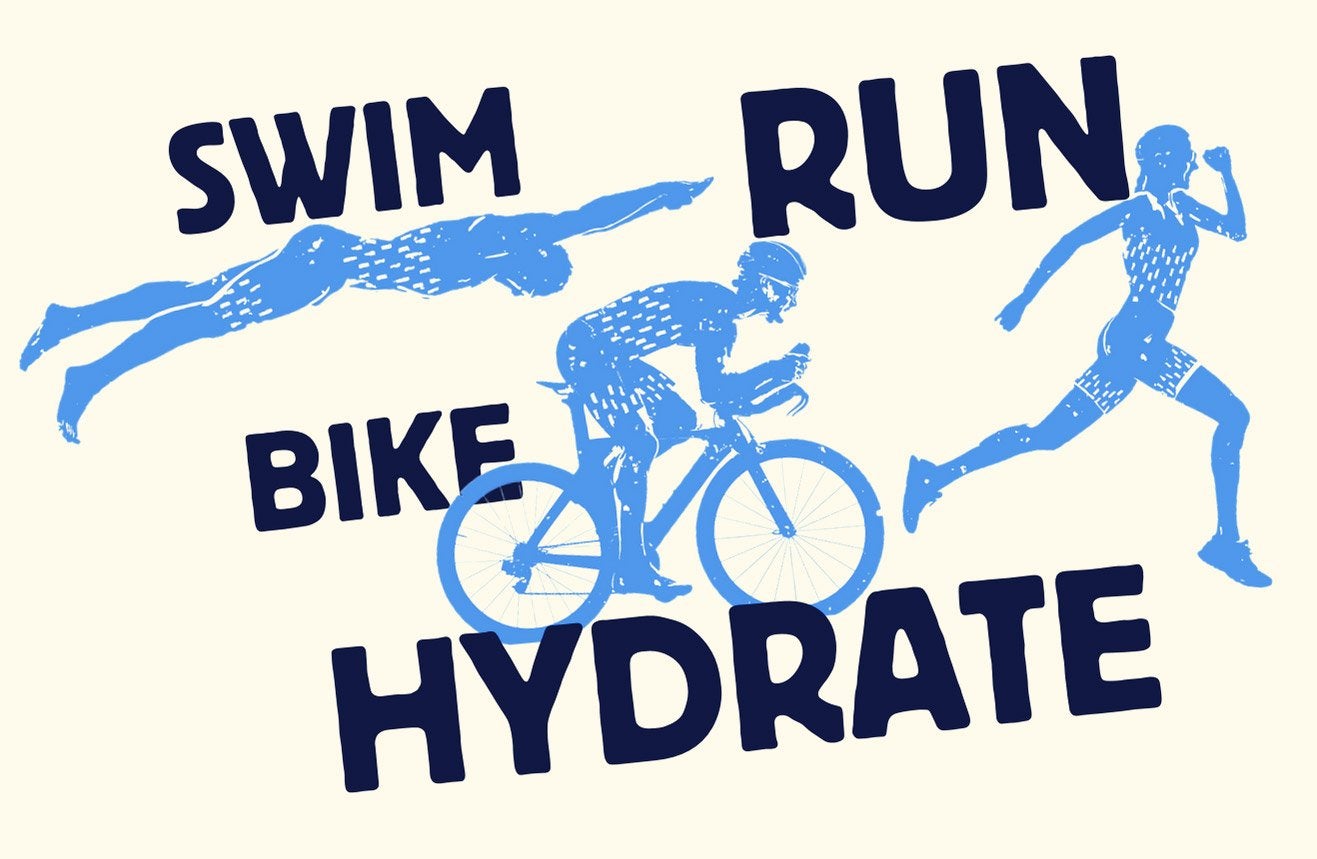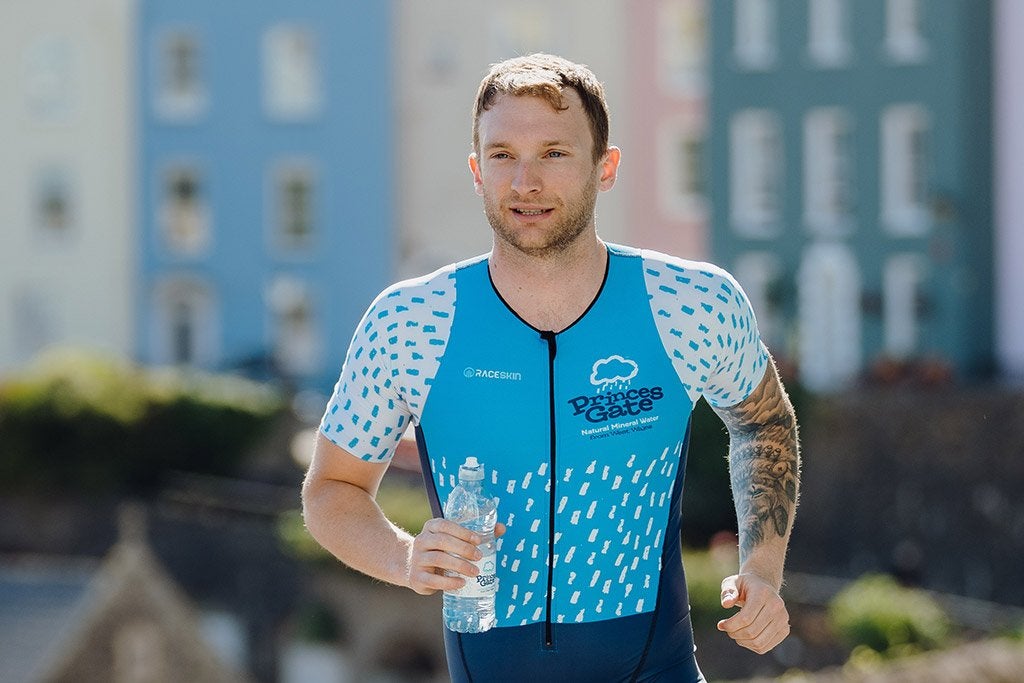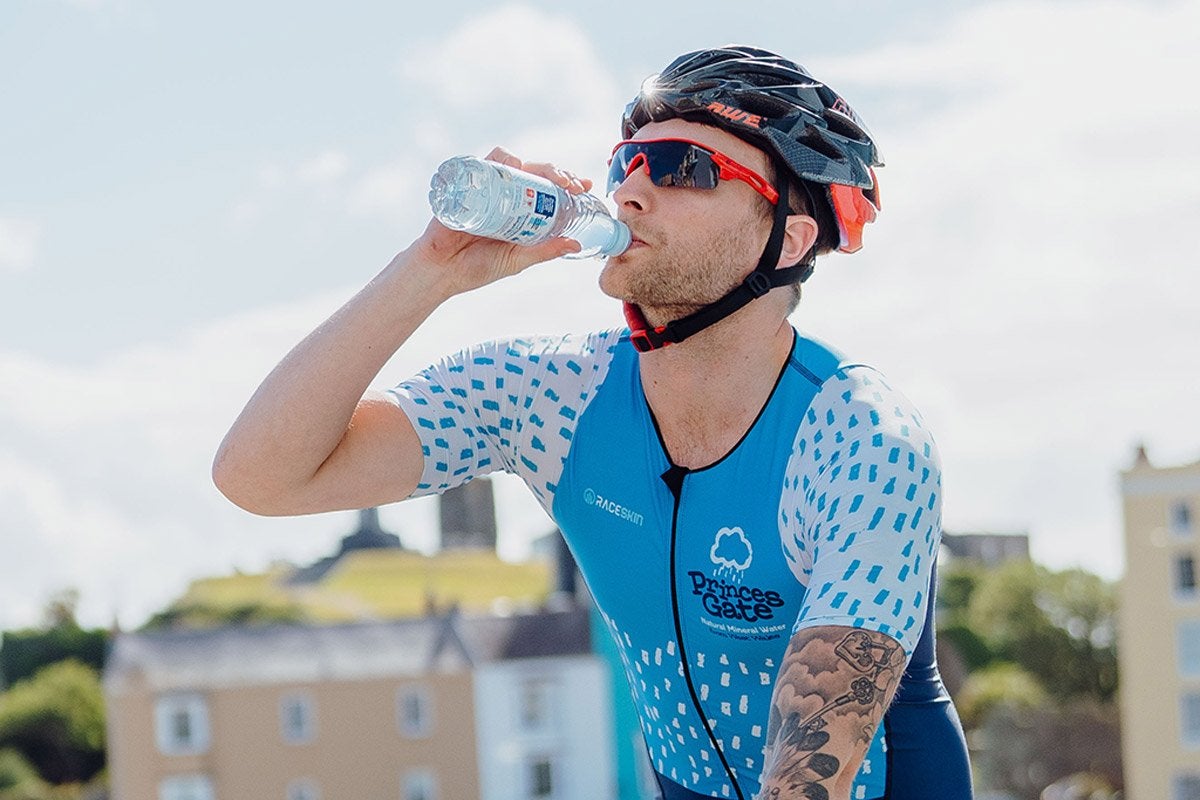November 1, 2024
Swim, Bike, Run, Hydrate.
Swim, bike, run, HYDRATE. Many people think that triathlon is made up of three disciplines, swim, bike and run; and almost forget the fourth. As on the surface it seems simple but is often the difference between a successful or unsuccessful race - hydration.
That is why we have roped in Peter Lloyd, IRONMAN coach and 3 x World Champ Qualifier, to help educate us on how best to get your hydration correct on race day. Peter or better known as @trilloydy has completed 5 x IRONMAN’s full distance and over 25 IRONMAN 70.3’s, so some would say he’s quite a pro when it comes to learning how to get your race day fuel right.
How much water do I need during training and racing?
This will vary, but a good starting point is between 10-12ml per kg of body weight per hour. In real terms for a 75kg athlete that means a 750ml bottle an hour. If you’re heavier it would be more, if you're lighter it would be less. Obviously, if your race is in warm conditions this could be higher. To help get more accurate numbers you can carry out a simple sweat rate test at home during a turbo session. The protocol for these is widely available online.
What are the signs that I could need more fluid than the average athlete?
There are some tell-tale signs that are very good pointers that you are a heavy sweater and would need to take on more fluid. They are:
- Salty lines on your skin and clothing after exercise
- Sweat that stings your eyes
- Frequent muscle cramp (this is now often debated but still worth noting!)
- You crave salty food during and after exercise
What are the signs of dehydration?
There are quite a few signs that point to dehydration. Here are a few:-
- A sudden drop in body weight from the previous 24 - 48 hours
- Your urine is a dark colour
- You have a dry mouth and are very thirsty
- You have a headache
- You are irritable and even have some sort of confusion
If you have a combination of the above then it would be a good idea to take on some fluid and not go training!
Is it possible to drink too much water?
Yes it is! This is called Hyponatremia and can lead to decreased performance levels plus other things including nausea and swelling. Something to be aware of.
What should I do leading up to a race?
You need to start your race in the best condition possible and with IRONMAN races starting early in the morning, this all starts the day before.
- Sip a bottle of Princes Gate mineral water the evening before, ideally with electrolytes. DO NOT OVERDO THIS. Remember, too much water is NOT better for you!
- After breakfast on your way to transition, sip a bottle - again with an electrolyte. Try to finish this about 45 minutes before your race to allow you to have a quick visit to the loo on the way to the swim start. Lots of people like to take a gel 20-30 minutes before the race. Some carry a very small bottle on the walk to the swim start to help ease the nervous dry mouth you get before a race.
- Have a bottle of Princes Gate mineral water in each transition bag to sip before starting the bike or the run. This is also handy to wash off any grit or to give your hands and face a freshen up too!
What should I do during the rest of the race?
Having practiced your hydration plan in training, you need to trust what you have learned and stick to the plan. Use the following points to help you.
Bike leg
- Your bike needs to be loaded with water bottles to start the race and you need to know where the aid stations are - use your race guide for this.
- Have an alert set on your sports watch to remind you to hydrate/fuel every 20-30 minutes
- Always make sure you have enough water on you to reach the next aid station.
- It’s a good idea to sip your drink when climbing if you can, as it helps to stop you from going too hard uphill.
- I ask my athletes to prepare a Special Need bag with 2 to 3 bottles of water and the fuel they need for later in the race. This means they have exactly what they need for the second loop.
Run leg
- Walk the aid stations on the run and take the fluids on board. Walking for 20-30 seconds at every aid station is better than walking for blocks of 20-30 minutes later in the day because you are dehydrated as you didn’t take on enough fluid earlier in the run.
- If there are times when you feel you can’t take on water, as often happens, try just swilling water around your mouth but make sure to get back on track at the next aid station.
- Some people carry a water bottle in their run belts for in-between aid stations. This is something you need to try before race day.
What should I do after the race and after training?
It is very important to take on fluids immediately after your race and training sessions ideally with an electrolyte of your choice to speed up the recovery process.
Hydration is only part of the equation. You need to dial into your fuelling strategy too, optimise that and then you will be ready to Take on the Dragon!
Good luck and enjoy your IRONMAN races!




